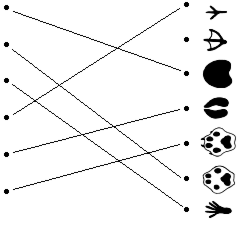Footprints
| a) |
Draw a line from the animal's name to its footprint.
|
||||||||||||||||||||||||||
|
|||||||||||||||||||||||||||
| b) |
When could it be useful to use footprints to identify animals?
_____________________________________________________________________________ _____________________________________________________________________________ |



